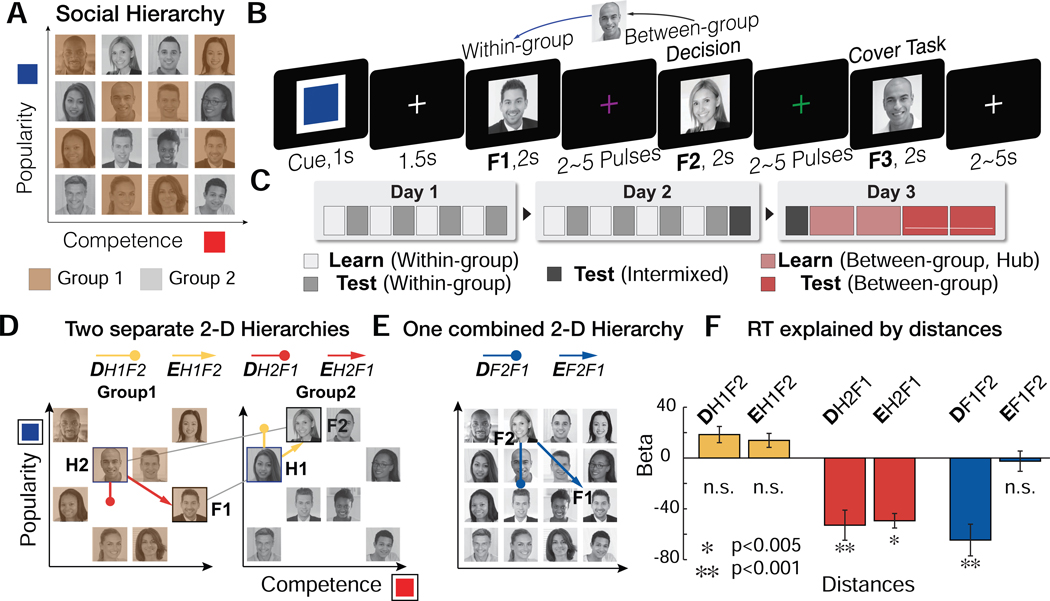Figure 2.
A. Participants learned the rank of members of each of two groups (brown and gray) separately in two dimensions: competence and popularity. Subjects were never shown the 1- or 2-D structures. B. Illustration of a trial of the fMRI experiment. Participants made inferences about the relative status of a novel pair (F1 and F2) in a given dimension (signaled by the Cue color). A cover task (to indicate the gender of the face stimulus, F3) followed at the end of every trial. C. On day 1 and day 2, participants learned within-group ranks of the two groups in each of two dimensions through binary decisions about the status of members who differed by only one rank level in a given dimension. On day3, subjects learned from between-group comparisons limited to ‘hub’ individuals, which created a unique path between groups per person in each dimension. Subsequently, on day3, participants were asked to infer the unlearned between-group status while undergoing fMRI. D. Participants could use hubs to infer the relationship between novel pairs. Possible trajectories for example inferences can be shown for each trajectory: the behaviorally-relevant 1-D distance (D, Fig.1C) and the 2-D Euclidean distance (E, Fig.1D). Subjects could use either of two trajectories: a forward inference from F1 to its hub (H1) that has a unique connection to F2 (DH1F2, EH1F2; yellow); or a backward inference from F2 to its hub (H2) that has a unique connection to F1 (DH2F1, EH2F1; red). E. As alternative paths, subjects may not use the hubs, but instead compute the distance in the relevant dimension between F1 and F2 directly (DF1F2), or their Euclidean distance (EF1F2) in the combined cognitive map of two groups (blue). F. Multiple linear regression results show that both the rank distance (DH2F1) and the Euclidean distance from H2 (EH2F1), but not from H1, significantly explain variance in RTs, in addition to the direct distance between F1 and F2 (DF1F2), while competing with other distance terms.

